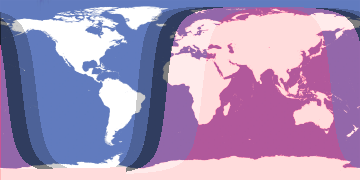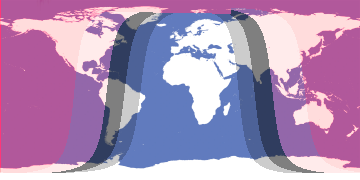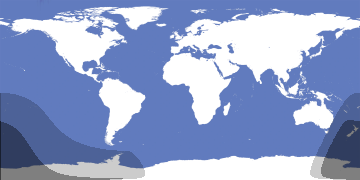Moon: Rise, Set, Phase
General information
Moon Phase - Waxing Crescent
illumination - 22.3%

Moon's Daily Motion
Moon Visibility Timetable on December 25
Moon Rise and Set Timetable
| Time | Elevation | |
| Moon Rise, 20.2% illuminated | 08:33 | -0° |
| Moon transit | 14:00 | 40° |
| Sunset | 14:54 | 39° |
| Civil sunset | 15:24 | 37° |
| Astrosession begin | 16:29 | 30° |
| Moon Set | 19:35 | -0° |
| Astrosession end | 03:46 | -57° |
| Moon rise | 08:59 |
Track Moon Position Throughout the Night
← Thu, 25 December 2025 →
| Time | |
| Altitude | |
| Azimuth |
Shift the map to change the time and observe Moon changing position in the night sky.
Lunar Events Calendar
| Phase | Date | Time | Constellation |
|---|---|---|---|
| First Quarter | Sat, 27 December 2025 | 09:01 | Pisces |
| Full Moon | Fri, 2 January 2026 | 23:57 | Gemini |
| Last Quarter | Sat, 10 January 2026 | 06:20 | Virgo |
| New Moon | Sun, 18 January 2026 | 09:43 | Sagittarius |
Lunar Map
Moon Features Visible by Naked Eye
Mare Tranquillitatis: The landing site of Apollo 11, the first manned Moon landing.
Mare Fecunditatis: A lunar mare in the eastern part of the Moon's near side.
Mare Crisium: A large lunar mare in the Moon's Crisium basin.
Mare Nectaris: A small lunar mare located in the Moon's Nectaris basin.
Apollo 17 landing site: Final Apollo mission, focused on geology with extensive surface activities.
Discover even more moon features with our interactive, high-resolution Moon map
Moon Passage Through Night
Double-click to unlock the map.
Current Moon position
| Time | 14:38 |
| Latitude | 37.3541 |
| Longitude | -121.955 |
| Moon elevation | 39° |
| Moon Azimuth | 168° |
Here you can see the current position of the Moon on the map, as well as its positions for moonrise and moonset. This tool allows you to track the Moon's movement throughout the night, providing you with accurate and up-to-date information.
Moon Dynamics This Month
| Date | Fri, 26 December 2025 |
| Twighlight start | 16:29 |
| Twighlight end | 03:44 |
| Rise | 09:05 |
| Set | 20:21 |
| Elevation at transit | 46° |
| Transit time | 14:43 |
| Distance to Earth | 0.00257 AU (384,467 km) |
| Equatorial coordinates at sunset | RA: 22h 54m 36s", Dec: -6° 51' 19s |
| Magnitude | -9 |
| Constellation | Aquarius |
| Phase | Waxing Crescent |
| Illumination | 31.3 |
Last and Upcoming Lunar Eclipse
Sun, 7 September 2025
Total Lunar Eclipse
| Global | From Your location | ||
|---|---|---|---|
| Penumbral | 05:30-10:56 | Not Visible | |
| Partial | 06:28-09:59 | Not Visible | |
| Total | 07:32-08:54 | Not Visible |
Tue, 3 March 2026
Total Lunar Eclipse
| Global | From Your location | ||
|---|---|---|---|
| Penumbral | 22:46-04:24 | 22:46-04:24 | |
| Partial | 23:51-03:19 | 23:51-03:18 | |
| Total | 01:05-02:04 | 01:05-02:04 |
Last and Upcoming Solar Eclipse
Sun, 21 September 2025
Partial Solar Eclipse
| Global | From Your location | |
|---|---|---|
| Penumbra | 07:31-11:55 | Not Visible |
| Umbra | - | Not Visible |
Tue, 17 February 2026
Hybrid Solar Eclipse
| Global | From Your location | |
|---|---|---|
| Penumbra | 23:58-04:28 | Not Visible |
| Umbra | 01:43-02:44 | Not Visible |
Astrometric & Physical Parameters of Moon
Coordinates & Visibility
| Right Ascension | 22.1461° |
| Declination | -12.51736° |
| Magnitude | -8.6 |
| Constellation | Aquarius |
| Elevation | 39.4° |
| Azimuth | 168.4° |
Basic Properties
| Mass, kg | 7.349E+22 |
| Mean radius, km | 1737.4 |
| Mean density, g/cm³ | 3.3437 |
Orbit
| Orbital period, days | 27.321582 d |
| Semi-major axis, km | 384400 km |
| Orbital eccentricity | 0.05490 |
| Inclination, degrees | 5.145 deg |
Rotation
| Mean solar day, hours | 29.5306 d |
Surface & Atmosphere
| Surface gravity, m/s² | 1.62 |
Brightness
| Visual magnitude V(1,0) | +0.21 |
Data Acknowledgment
Our solar system data—including planetary physical and orbital parameters—comes from the Solar System OpenData API , maintained by Le Système Solaire. We thank Christophe and the contributors for making this open data available.




